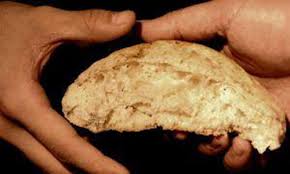
I can’t be careful enough, it seems. Broken bread leaves crumbs and remnants.
The problem has been addressed, of course. Sliced bread.
It was the dream of Otto Rohwedder, an inventor from Iowa, to bring such a luxury — and increased neatness — to the bread-consuming public. His idea and his invention, the loaf-at-a-time bread slicer, became a huge success.
That’s why, upon discovering something new that addresses a problem we have that we describe it as the “greatest thing since sliced bread.”
Otto’s genius wasn’t openly embraced by bakers of his time. Pre-sliced bread became stale quickly. So, subsequent technology including loaf-wrapping machines and today’s plastic bag.
In my Christian faith tradition and in my little tribe of believers, an important moment of each worship is communion — a reenactment of the Last Supper in which we break bread and drink wine as symbols of Jesus’ body and blood. And we literally break bread.
I know some groups have moved to individual pieces of matzo or specially-made communion wafers — the pre-sliced bread of the Eucharist. More sanitary and neater. No pesky crumbs from the mechanical process of breaking bread. Please note, I’m not trying to make a theological judgment here regarding communion bread.
My preference, however, is for breaking and crumbs. The pieces left behind cling to me or fall around me. They are reminders that my brokenness isn’t neat and sanitary.
And sometimes I, like the bakers of old, worry that a move away from the breaking process will bring a staleness that insulates me from what is truly divine.
